The festivals mixing music and science
- Published
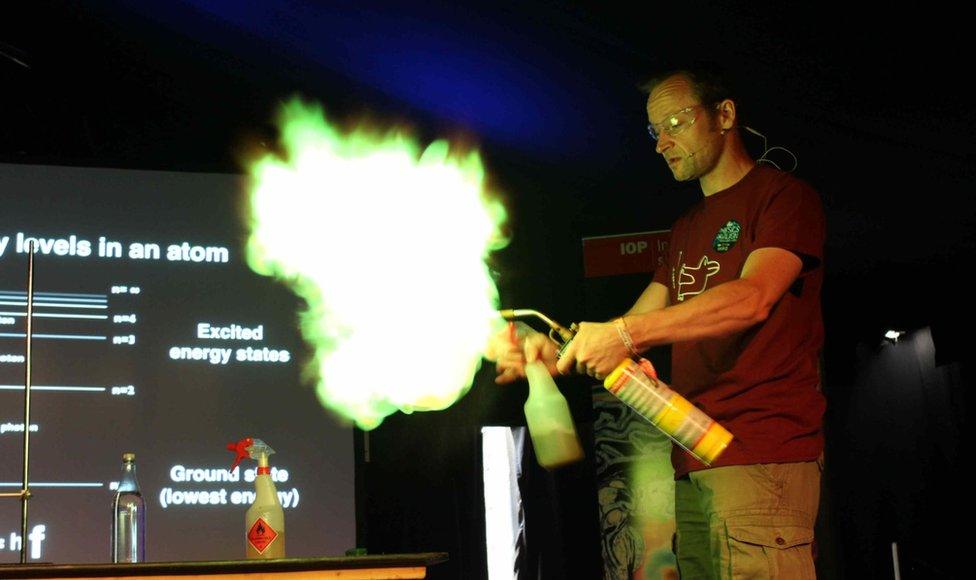
Music festivals are increasingly becoming a venue for science as well as bands. Are music and science a good mix?
"It's changed my life," says Andrea Sella, who is professor of chemistry at University College London.
"I couldn't believe that I'd found myself at Latitude in front of about 1,000 people talking about carbon dioxide, dry ice and climate change," he says of his first involvement in scientific outreach at a music festival seven years ago.
"I thought, 'Oh my God, they started laughing. Let me remember what I did to cause it.'
"It's changed the way I teach and speak to students. I've been able to take more risks. I've learnt enormous amounts about the craft of speaking in public."
Prof Sella, who won the Royal Society Michael Faraday Prize in 2015 for his science communication, is one of an increasing number of scientists who are involved in public engagement at music festivals.
Bluedot, Green Man, Chagstock and Glastonbury are among the growing number of festivals who have brought music and science together.
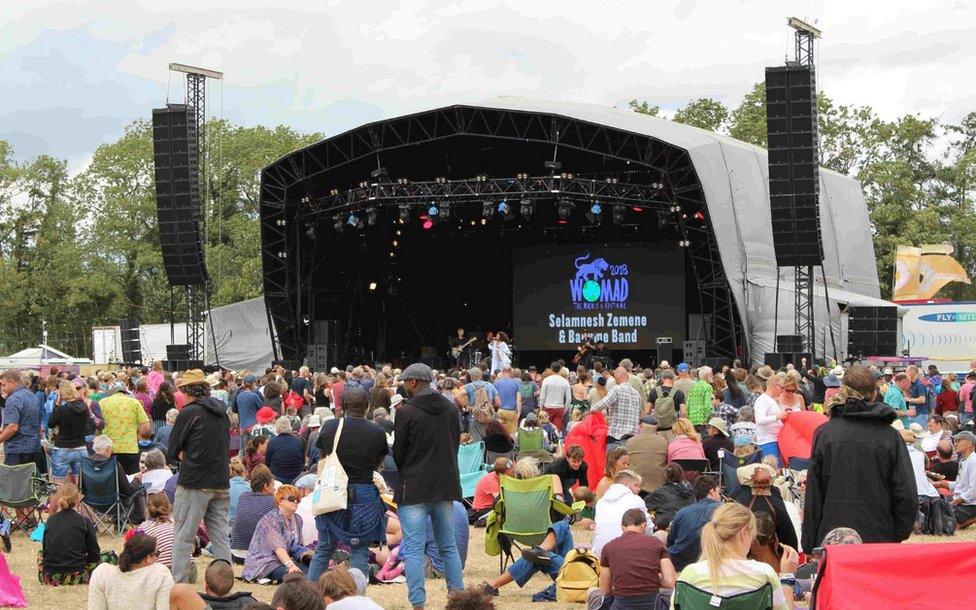
The main stage at Womad
Womad, the world music festival at Charlton Park in Wiltshire, recently hosted its physics pavilion for the third successive year and claims to be the first music festival to do "real" science.
One of the people behind the pavilion is Prof Roger Jones, of Lancaster University who also works on the Atlas particle detector experiment at Cern.
"There are at least two major music festivals in Europe that we're looking to work with," he says over a backstage cup of tea.
"They realise there's an appetite for science, and music festivals are in a competitive market. They want things that make them more attractive to a broader audience.
"We had 4,000 people come to the physics pavilion in 2016 and just under 6,000 last year and this year we're looking at a similar number again. The only thing stopping us from getting any bigger is space," Prof Jones says.
The pavilion's main tent hosted talks and demonstrations, such as one on lasers called "From Death to Art", a science rap performance and a live link up with Nasa's Hubble telescope control room.
The "Physics of Gin" workshop went down well in "The Lab" tent, while Institute of Physics volunteers and Badminton school students manned the "Give it a Go" gazebo.
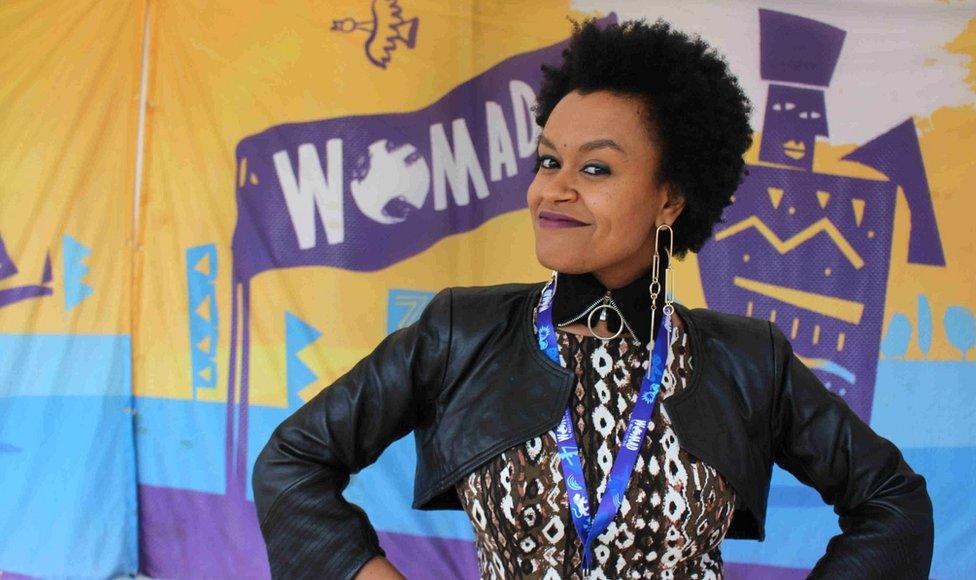
The singer Meklit has incorporated star sounds into her music
"Music and science are a good mix," says Meklit, an Ethiopian born, US-based singer, who performed in the main festival at Womad.
She has incorporated star sounds - created from data by a Nasa engineer - in her song Supernova.
"I'm a TED fellow and go to a lot of TED conferences. Scientists are some of the most creative people I know," she adds.
"Science at music festivals is definitely growing, as is outreach in general," says Alice Roberts, the writer, broadcaster and professor of public engagement in science at Birmingham University.
"The first time I talked at Glastonbury five years ago I thought, 'Who is going to come and listen to me in a tepee on a hill when there is all this music nearby?' But a couple of hundred people came," she says.
"You engage with an audience that is going for the music and it works. We have a false and archaic division between science and the humanities."

Robin Ince (R) pictured with Prof Brian Cox, says speaking with passion is key to engaging people on science
Prof Roberts admits that assessing the long-term impact of such outreach is difficult. "You have to combine quantitative data with case studies.
"A student came up to me at Bluedot recently and said: 'The reason I started doing anthropology was because of you.' It was humbling and made it feel worthwhile," says Prof Roberts, who was talking about archaeology, history and genetics.
Prof Jones says that outreach in general has in part led to an increase in students studying physics.
"At Lancaster in 2011/12 we had about 80 students per year. In 2017/18 it was 143. We're doing particularly well, but there has been a rise across universities," he says.
Prof Roberts says the secret of successful outreach is pitching things at the right level. "It is about being brave and not dumbing down, getting the right balance of being accessible but tackling some complex issues. Create a story line that brings in the concepts," she says.
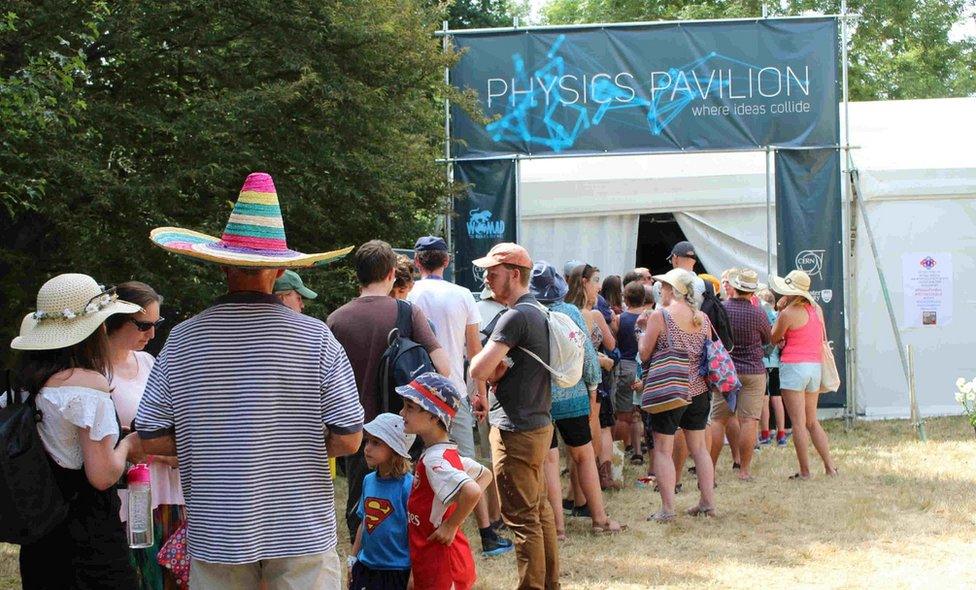
The physics pavilion at Womad draws a crowd
Robin Ince, the co-presenter, with the scientist and musician Brian Cox, of the Radio 4 comedy and science programme The Infinite Monkey Cage, says: "Dumbing down is a boring accusation from people who want to keep their subject to themselves.
"The main formula that works is the speaker has to have passion," he adds.
Jacky Jarrett, from Bristol, visited the physics pavilion with her seven and 10-year-old daughters, who learnt about electrical circuits, while making card faces with flashing LED lights for the noses and eyes.
"I don't know if I would have gone to a science event in the past. I would have thought it was boring, but now I might go to more," she says.
Emma Welton travelled to Womad from Exeter with her 10-year-old son, Harry. "I'm interested in music and he's interested in science," she says, after Harry investigated a cornflour mixture with a spoon.
"It felt solid because the particles were squashed together," he says.
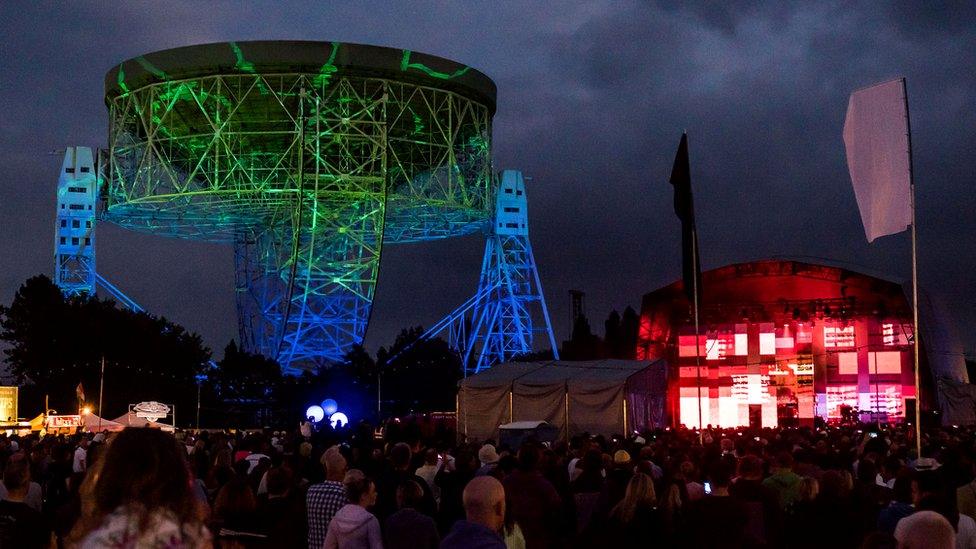
Blue dot, held in the shadow of the Lovell radio telescope dish, also plays host to scientific demos and talks
Robin Ince has been mixing science and comedy for 15 years and is a regular on the festival scene.
"At Glastonbury we did an Infinite Monkey Cage on quantum cosmology and had 3,000 people in the tent. They had been drinking cider - and other things - for a few days but they still engaged," he says.
"Science at festivals is becoming more popular because people aren't getting science from other places. People go to festivals to hear a few bands, but not all of them on the bill, and to experience something new, maybe about black holes.
"The main thing with a music festival is you have several stages and people wander about, but at a literary festival you buy an individual ticket for an author's talk," Robin Ince adds.
Ana Godinho, head of education, communications and outreach at Cern, says it puts about £8,000 into the costs of the Womad physics pavilion and that it represents good value for money.
"Womad is the only music festival we do. We are thinking of doing more. We're not here to recruit scientists. It's to raise awareness," she says.
The rest of the pavilion's cost - which Prof Jones estimates at under £30,000 ¬- comes from Lancaster University, the Institute of Physics, the Science and Technology Facilities Council and Womad itself.
So what does the future hold for science outreach and music? Prof Sella says: "I think it will continue to grow. It may become edgier and have more niches."
"We're thinking about breaking out of the pavilion and doing installations around the Womad site and doing things on the main stages," Prof Jones says.
He would like to get a well-known musician who is also a scientist to appear in the pavilion.
"You don't have to be called Brian to apply," he says with a smile.